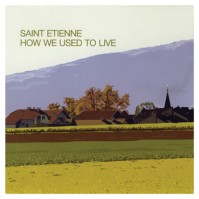

Johannes Brahms: Symphonies (2012) 3CD Set

Santana has sold more than 90 million records worldwide, making them one of the world’s best-selling groups of all time. Carlos also won Grammy Awards as a solo artist in 19. The band has earned eight Grammy Awards and three Latin Grammy Awards, the latter all in 2000. In 1998, the group was inducted into the Rock and Roll Hall of Fame. The musical direction then changed to a more contemplative and jazzy style as the band's early personnel gradually departed, leaving the name in the hands of Carlos Santana, who guided the group to consistent commercial success over the next quarter-century. The group was the last major act to emerge from the psychedelic San Francisco music scene of the 1960s and it enjoyed massive success at the end of the decade and into the early '70s. Santana is the primary exponent of Latin-tinged rock, particularly due to its combination of Latin percussion (congas, timbales, etc.) with bandleader Carlos Santana's distinctive, high-pitched lead guitar playing.

Sony BMG Music Entertainment #88697336542 Latin Rock / Blues Rock / Psychedelic Rock / Jazz Rock / Jazz Fusion VA - Glam Rock Anthology (2012) ĮAC Rip | FLAC (Img) + Cue + Log ~ 1,09 Gb | MP3 CBR320 ~ 399 Mb It comes across as much leaner than other recorded “full” versions (i.e., Chung’s on DG, Dutoit’s on Decca), and indeed the details of the “big” score are nice to hear. But there’s a nice hitch: it’s played on period instruments and uses a harmonium instead of an organ. Philippe Herreweghe recorded the 1893 version several years ago here he opts for the full-orchestra setting.
#Saint etienne tiger bay deluxe rar full
Philippe Herreweghe, La Chapelle Royale - Gabriel Fauré: Requiem, version 1893 (1988)ĮAC | FLAC | Image (Cue & Log) ~ 229 Mb | Total time: 56:15 | Scans includedĬlassical | Label: Harmonia Mundi | # HMC 901292 | Recorded: 1988Ĭonductors coming to the Fauré Requiem have choices: The original, 1888 version with only five movements of the eventual seven and very minimal instrumentation the more commonly performed 1893 chamber version, scored with only the lower strings (violins reserved for the In Paridisum movement), plus harp, timpani, organ, horns, and trumpets, but without woodwinds and the 1900 revision for full orchestra.
#Saint etienne tiger bay deluxe rar series
This applies to the opera Die Loreley, which offers a rewarding listening experience, as well as to his three symphonies composed between 18 and originally intended as a series of works forming a trilogy. Instead, Bruch himself much too quickly and all too often lost his faith in his "musical progeny" because he did not have the patience to let them mature in peace and to secure a place in the broader public consciousness. The reason behind this has nothing to do with the superlative, worldwide renown of the first of his violin concertos, or with his musical language, which had already fallen out of fashion when he died exactly a hundred years ago. Max Bruch has never made things easy for fond listeners or performers of music his contemporaries found him hard to handle, and so have later generations. Robert Trevino, Bamberger Symphoniker - Max Bruch: Symphonies 1-3 Overtures (2020)ĮAC | FLAC | Image (Cue & Log) ~ 680 Mb | Total time: 149:04 | Scans includedĬlassical | Label: CPO | # 555 252-2 | Recorded: 2019 All this required respect for the exact point in which embellishments have to be added (without exceeding), because: ‘nothing is more beautiful and moving than what is simple’. The idea that ‘true expression depends on the sound, intonation, movement, taste and aplomb of the measure’ was a constant tenet with Campagnoli, as was his insistence on the need to understand clearly the character of each piece in order to appreciate to the full the composer’s intentions. He thus enjoyed a florid exchange with some of the most famous teachers and Nevertheless, there is an unmistakably composers of the time, in particular with Cherubini and Kreutzer. In 1797 he was made concert director and first violin at the Gewandhaus in Leipzig, a post that he held until 1818, although he also maintained his contacts with the most advanced and influential cultural centres of Europe. Campagnoli’s career as a concert performer began in Rome in 1775, continuing in a long tour of the courts of the capital cities of Europe. The 41 Caprices he wrote for viola and the 7 Divertimenti for solo violin are still in use today. The considerable fame that Bartolomeo Campagnoli (1751–1827) achieved during his own lifetime was largely due to his contribution to violin studies. 22, arranged for Viola & Piano by Carl Albert Tottmann (2022) Marco Misciagna & Marco Ciannella - Campagnoli: 41 Caprices for Viola, Op.


 0 kommentar(er)
0 kommentar(er)
